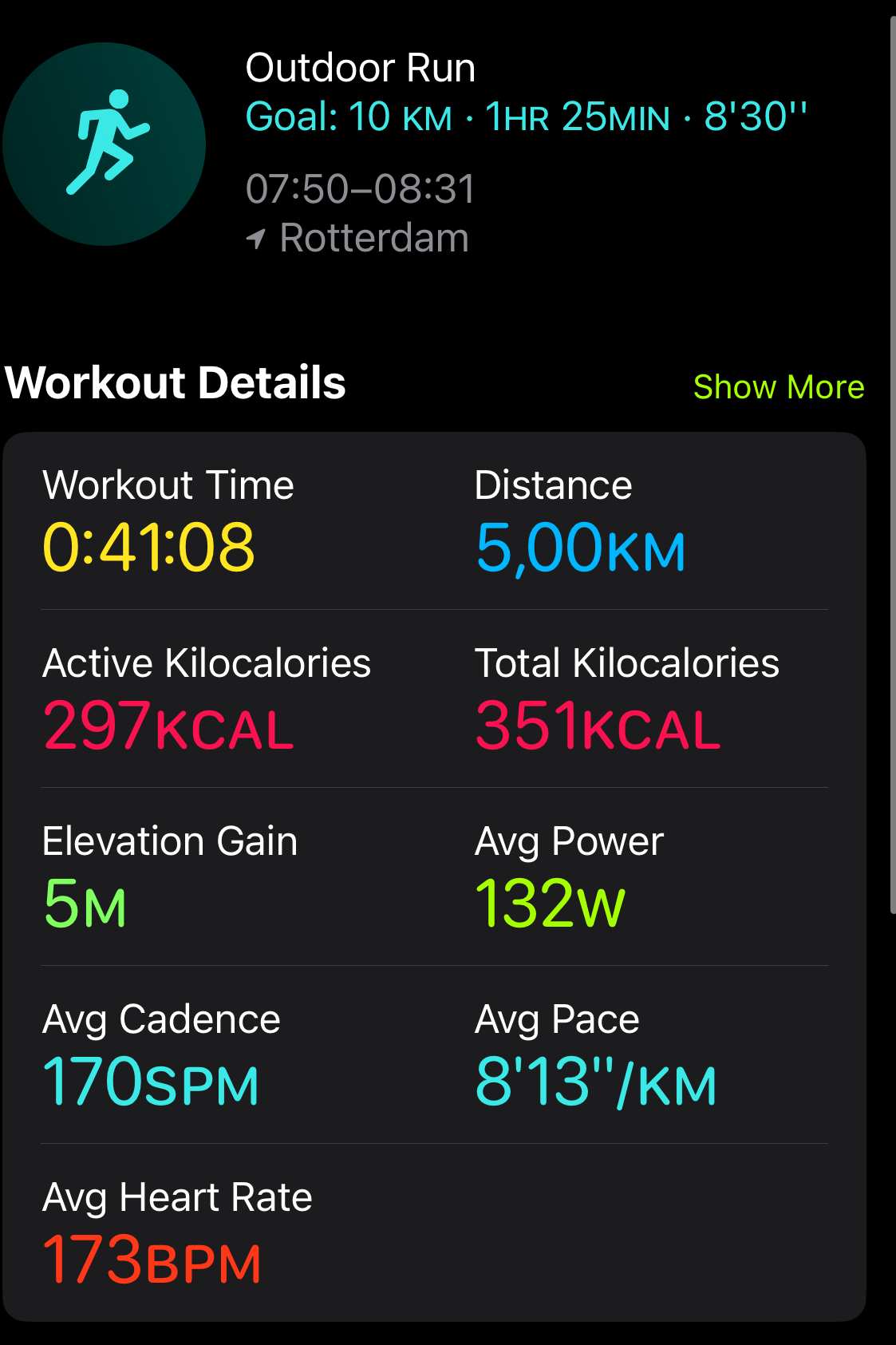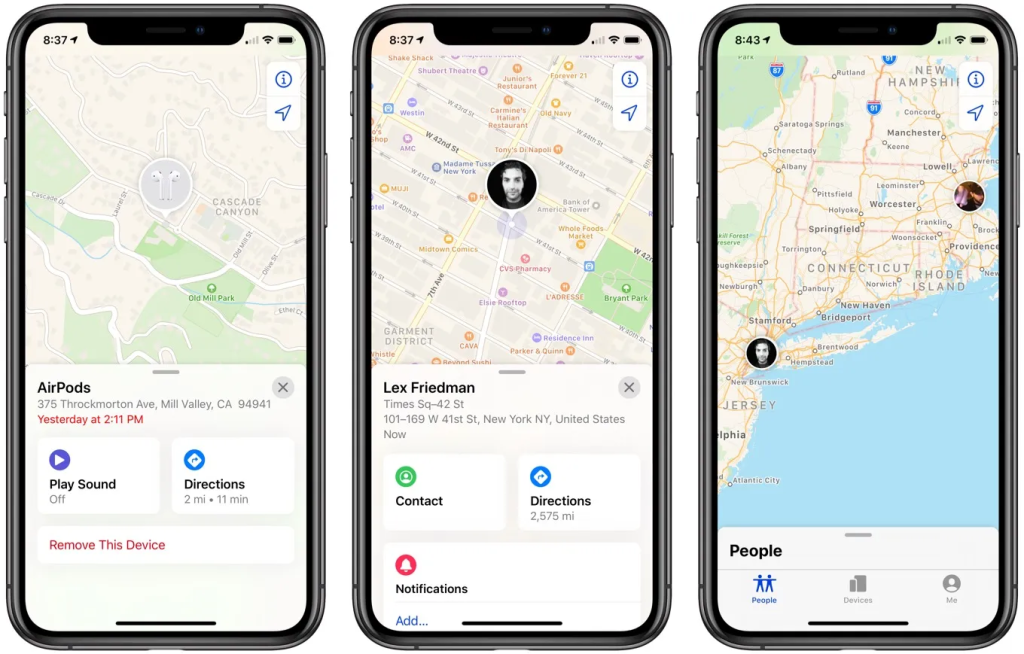
It would be fair to say that many companies develop their ecosystems within their digital products. One of the most commonly recognized ones is The Apple Ecosystem. With a broad assortment of products, it becomes relatively easy and increasingly tempting to take part in this. I must admit to having become a consumer of their digital ecosystem, changing my digital practices to include multiple products offered by Apple. The synchronization between the devices and iCloud offered by Apple makes it more convenient for devices to connect and transfer data with one another. It is extremely convenient to continuously add products to your digital practice, as it may appear as if it will simplify and add streamlined experience to one’s digital experience.

On Saturday morning, I woke up to my Apple watch alarm at 7 am. I turned it off, checked through my iPhone notifications, and answered messages. I got ready, grabbed my AirPods which automatically connected to my iPhone, and decided to go for a run. My Apple watch tracked all the data from my workout (as seen in the image to the right). During the workout, I can control my music and check my data through my Apple Watch. This data automatically synchronizes to my iPhone. For this early in the morning, I have already used multiple facets of the Apple Ecosystem. Later on, when I started to write this blog post, I used my MacBook to open the website and decided to AirDrop the screenshot of my run from my iPhone. My friend and I hung out after, sharing digital art we made on an iPad with an Apple pencil while catching up with one another. We both went our separate ways, and as soon as she got home I was notified thanks to the FindMy app, in which we can view one another’s location and set up notifications.

Before becoming an active consumer of the Apple Ecosystem, an average day in my life was much simpler than this. I would wake up to an alarm clock. I would take notes on paper with pens as opposed to on my iPad with my Apple pencil. I would go run, or workout, without worrying about the data behind it because I would have no means to track it. Listening to music on the go was not possible unless it was through a radio. I would not receive notifications, but I’d find out information from meeting up with my friends.
The positive benefits of an Apple Ecosystem are definitely appealing to the general public. With improved safety features and data tracking it helps individuals have a clearer insight into their own lives and their loved ones. The features offered such as iCloud and AirDrop simplify sharing data and make one’s work easier to do, and share with others. Convenience is a large reason as to why such digital ecosystems become so successful.

Although it may be marketed as positive added benefits that are being offered, one must be aware of the dangers that come with an ecosystem such as this one. For example, when using my Apple watch, I focus on closing all my exercise rings on a daily basis (as seen in the image to the right). I notice that this is a part of a larger societal development as Apple allows you to add friends, and even compete with one another. This can, as a result, become extremely competitive and affect one’s mental health. It is worth noting that this ecosystem also thrives on other individuals being a part of the ecosystem. Just like a black hole, Apple has a successful way to suck you, and many others in.
One must ask the question if they take place in a digital ecosystem and if the added benefits contribute to an improved quality of life. It is crucial to keep mental health in mind when considering the features offered by these technologies. Companies such as Apple are booming and to continue to do so, they must introduce new technologies to keep their customers invested in what they have to offer.


I honestly think that the worst aspect of Apple’s ecosystem is that if you need a device or service that Apple doesn’t (yet) provide, it can be incredibly difficult to try and implement it in conjunction with Apple’s devices. I also think that is some sense the Apple landscape settles into the physical with the lightning charging cables and outputs which solely use Apple cables and such.
Nice article, I agree on the competition aspect of smart watches, which can induce an obsession over tracking health parameters, such as diet, exercise, heart rate variability etc.
Personally, I believe the best way to incorporate these last devices in our lives is to alternate periods of use and disuse. Track some workout with digital data, and track others with personal sensations as feedback
Nice blog! I totally agree, the moment apple convinced you to user their products, you become trapped in a never ending circle. I remember having a little problem when I was looking to replace my current macbook. On one side, there are many good and quality options when looking for a new laptop (like the new samsung laptops). These have often better specs and are cheaper than Apple laptops. On the other side, Macbooks offer comfort, high quality and special OS (macOS) that works really well with all the other Apple devices. So the way I understand it: becoming part of the ecosystem means becoming a loyal costumer.
Before Apple, I often ended up “black-screening” my laptops, requiring the system to be reinstalled. I enjoyed experimenting with my devices, but Apple was the first laptop that restricted deep access to system settings, except through the Terminal, which motivated me to learn more before tinkering. I appreciate the functionality of this environment and see it as nothing more than a well-designed tool, much like a hairdryer: practical and effective, without unnecessary emotional attachment. One element I do miss, however, is the Apple printer.
That said, I do feel frustrated when other systems make basic tasks, like transferring files between devices, unnecessarily complicated or when taking a simple screenshot requires more than one step. Apple is not overloaded with unnecessary features or visual clutter, as other systems often are.
As for the ethical aspects that many supporters and critics raise, whether it’s Apple, Windows, Android, or others, they’re all corporations at the end of the day. We need to maintain our mental health regardless and try to stay assertive in navigating digital challenges like these, wherever they arise.
I completely relate to the “black hole” analogy—once you’re in, it’s hard to step out without feeling like you’re losing the seamless integration that Apple is so good at offering.
Your point about the competitive aspect of features like the Apple Watch really resonated with me. It’s amazing how something intended to promote health and productivity can also create stress or unhealthy competition. I like how you’ve framed this as part of a larger societal trend—it feels like technology often amplifies these tendencies rather than solely creating them.
I also appreciate how you’ve highlighted the importance of questioning whether these ecosystems genuinely improve quality of life. It’s easy to get swept up in the convenience and polished design, but it’s crucial to reflect on how these tools affect mental health and habits. Your suggestion to keep that in mind when navigating these ecosystems is really thoughtful.
I completely agree that this ecosystem has led to unhealthy relationships like aiming to close all of the circles on an apple watch, or constantly having access to friends locations. I can’t even remember a time without having this type of connection between my devices. Even with just the family icloud account I share with my parents and sister, I can see what apps they download and even their messages if a device isn’t properly installed. It is also fascinating to think about it as a sort of black hole and the importance on reflecting on the simplicity of having all apple products in relation to the improvement of life it may, or may not provide.